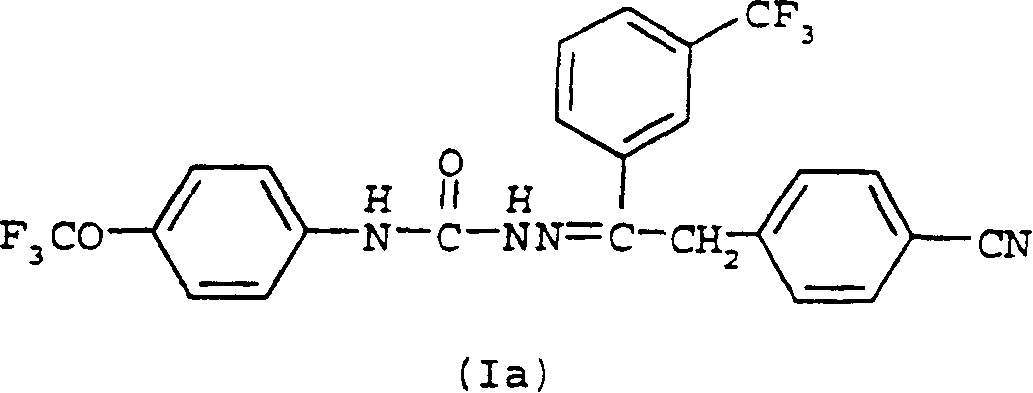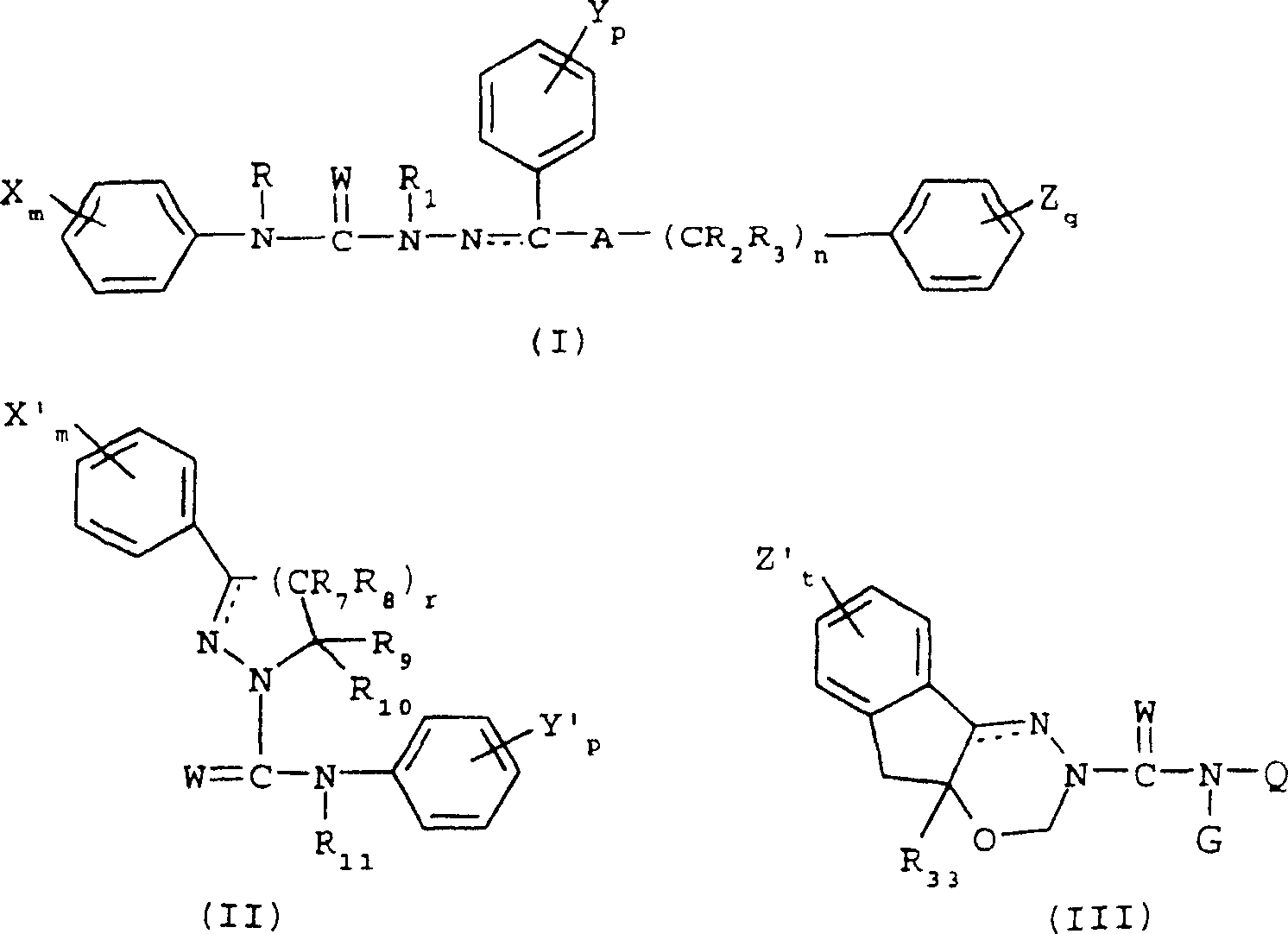Synergistic insecticidal compositions
A composition and insecticide technology, applied in the direction of insecticides, biocides, animal repellents, etc., can solve the problems of undiscovered synergy, difficulty in environmentally non-toxic insecticide compositions, and unsatisfactory control of insects
- Summary
- Abstract
- Description
- Claims
- Application Information
AI Technical Summary
Problems solved by technology
Method used
Image
Examples
Embodiment 1
[0089] Evaluation of the Synergistic Insecticidal Effect of a Neuronal Sodium Channel Antagonist in Combination with a Second Insecticide
[0090] In this evaluation, Helicoverpa zea (cotton bollworm), Helicoverpa zea (Tobacco moth), and pyrethroid-resistant Helicoverpa zea larvae were obtained from laboratory clones. Pyrethroid-resistant larvae of S. fumigatus were derived from the PEG strain [Campannola & Plapp, Proceedings of Beltwide Cotton Conference (1988)].
[0091] Cotton leaves were dipped into acetone / water solution at a volume ratio of 1:1 of the test compound, or a combination solution of the test compound, for about 3 seconds. After soaking, the leaves are allowed to dry for 2-3 hours. Plastic bioassay dishes with many open holes (4.0 x 4.0 x 2.5 cm) were used as test stands. A portion of the treated leaf was excised, a soaked cotton tooth core and a single third instar larva were placed in each well, covered with a sticky sheet of ventilated transparent plastic...
Embodiment 2
[0097] Evaluation of the Synergistic Insecticidal Effect of Combining a Neuronal Sodium Channel Antagonist with a Guanyl Hydrazone
[0098] In this evaluation, adult male German cockroaches (Blattella Germanica) were used. 4.0 grams of ground Purina Dog Chow (Hi-Pro Glo) were treated with the test compound alone or in combination with a second test compound in acetone. After treatment, the acetone was evaporated and the treated dog chow was placed in a 3 / 4 oz plastic cup that was placed in a folded plastic box (16"L x 11"W x 6"H) In the space formed by the absorbent paper sheet. The plastic box (test stand) is also loaded with a 1 oz narrow mouth bottle with two tooth cores inserted into the bottle mouth. The ground dogchow that has been treated with reagent grade acetone reagent Prepare the control box in the same way. Each treatment is in triplicate. Place 20 healthy adult male cockroaches raised in the insect room on each test bed. The test bed is then kept at 76 ° F, and ...
Embodiment 3
[0105] Evaluation of the Synergistic Insecticidal Effect of a Neuronal Sodium Channel Antagonist in Combination with a Recombinant Nuclear Polyhedrosis Virus Capable of Expressing an Insect Toxin
[0106] In this evaluation, Helicoverpa zea (cotton bollworm) larvae used in the experiments were obtained from laboratory clones. Test compounds were dissolved in acetone / water in a volume ratio of 1:1. Plastic bioassay trays (C-D International, Pitman, NJ) were used as test stands. Each disc has 32 open holes (4.0 x 4.0 x 2.5 cm). A portion (5 ml) of a wheat sprout powder based artificial diet (Southland Products, Lake Village, AR) was poured into each well. After the food hardened, 0.4 ml of the test solution was added dropwise to the surface of the food in each well. Spread the test solution evenly over the surface of the food by holding the test pan and tilting it slightly from side to side. Then place the dish in a ventilated area for 2 hours until no more water collects on...
PUM
 Login to View More
Login to View More Abstract
Description
Claims
Application Information
 Login to View More
Login to View More - R&D
- Intellectual Property
- Life Sciences
- Materials
- Tech Scout
- Unparalleled Data Quality
- Higher Quality Content
- 60% Fewer Hallucinations
Browse by: Latest US Patents, China's latest patents, Technical Efficacy Thesaurus, Application Domain, Technology Topic, Popular Technical Reports.
© 2025 PatSnap. All rights reserved.Legal|Privacy policy|Modern Slavery Act Transparency Statement|Sitemap|About US| Contact US: help@patsnap.com



